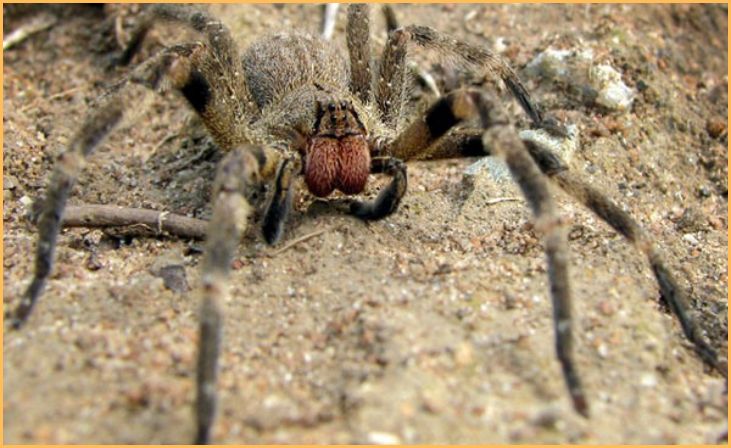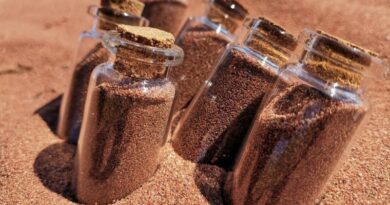Deadliest Spiders on Earth – In the intricate tapestry of Earth’s biodiversity, spiders, with their fascinating yet often misunderstood nature, play a crucial role. Within this diverse arachnid realm, some species stand out for their potentially lethal impact on humans. This exploration delves into the world of the deadliest spiders, uncovering the anatomy, behaviors, and venomous capabilities that make them formidable.
From the notorious Brazilian Wandering Spider to the elusive Sydney Funnel-web, and the ominous Black Widow to the reclusive Brown Recluse, this examination seeks to shed light on these enigmatic creatures.
Beyond instilling a sense of caution, understanding these spiders aims to dispel myths, provide crucial first aid information, and promote coexistence with these vital contributors to our planet’s ecosystem. Embarking on this journey offers a window into the delicate balance between fear and appreciation for the intricacies of nature.
Deadliest Spiders on Earth
Brazilian Wandering Spider (Phoneutria spp.)

The Brazilian Wandering Spider (Phoneutria spp.), primarily found in South America, is infamous for its potent neurotoxic venom. Also known as the armed spider, it is recognized for its aggressive behavior and striking defensive postures.
A bite from this spider can induce severe symptoms, including muscle spasms, paralysis, and respiratory distress. While fatalities are rare, the venom’s potency makes the Brazilian Wandering Spider a noteworthy arachnid.
The spider earned its name due to its wandering nature, often found on the ground rather than in a web. Immediate medical attention is crucial in the event of a bite to manage potential complications.
Also, Read – Arachnid Wonders: Unveiling 8 Superlative Spiders in Nature
Sydney Funnel-web Spider (Atrax spp.)
The Sydney Funnel-web Spider (Atrax spp.), native to Australia, is notorious for its potent venom. Among its species, the Sydney funnel-web (Atrax robustus) stands out. Possessing highly toxic neurotoxins, a bite can be lethal, particularly to children.
The spider is recognized by its robust build and funnel-shaped webs. Despite its dangerous reputation, antivenom has significantly reduced fatalities. Found primarily in New South Wales, these spiders often seek shelter in moist habitats.
Prompt medical attention is essential if bitten, as symptoms can escalate rapidly, including muscle spasms and respiratory distress. Public awareness and effective antivenom have played vital roles in minimizing the impact of Sydney funnel-web spider bites.
Redback Spider (Latrodectus hasseltii)
The Redback Spider (Latrodectus hasseltii), native to Australia, is a venomous arachnid related to the black widow. Identified by a distinctive red stripe on its abdomen, the female redback is more venomous than the male. Its neurotoxic venom can cause severe pain, muscle weakness, nausea, and, in rare cases, systemic effects.
While fatalities are uncommon due to available antivenom, bites can be medically significant. Redbacks are often found in sheltered locations, like outdoor furniture or debris.
Despite their potentially harmful bite, redback spiders are generally not aggressive and only bite when provoked. Immediate medical attention is advised for anyone bitten by a redback spider, especially if experiencing severe symptoms.
Black Widow Spider (Latrodectus spp.)

The Black Widow Spider (Latrodectus spp.) is a venomous arachnid found worldwide, recognized by its shiny black color and red hourglass-shaped mark on the abdomen. While there are various species, the females are more venomous than males.
Their neurotoxic venom contains latrotoxins, causing muscle pain, cramps, and, in severe cases, respiratory failure. Despite the potency of their venom, fatalities are rare, as medical intervention can effectively treat black widow bites.
Black widows prefer dark, sheltered locations like woodpiles. Known for their distinctive webs, they are generally non-aggressive but bite defensively. Prompt medical attention is essential if bitten, particularly for vulnerable individuals or those experiencing severe symptoms.
Mouse Spider (Missulena spp.)
The Mouse Spider (Missulena spp.), native to Australia, is a venomous arachnid with relatively low human encounter rates. While bites are infrequent, the venom can cause localized pain, nausea, and headache. Despite their name, these spiders are not named for preying on mice but rather due to their burrowing habits. Mouse spiders are characterized by their robust appearance and often dark coloration.
Though venomous, fatalities are extremely rare, and symptoms typically subside without severe consequences. These spiders are primarily found in burrows in soil or sand, where they wait for prey. While generally not aggressive, caution is advised, and seeking medical attention is recommended for those bitten, especially if experiencing adverse reactions.
Also, Read – Snake Bite First Aid and Treatment: 10 Things You Must Know
Six-eyed Sand Spider (Sicarius spp.)
The Six-eyed Sand Spider (Sicarius spp.), inhabiting deserts in Southern Africa and South America, is known for its potentially dangerous cytotoxic venom. With a flattened appearance and six eyes arranged in three diads, these spiders are adept burrowers.
While rarely encountered by humans, a bite from a Six-eyed Sand Spider can cause tissue necrosis due to the cytotoxins in its venom. Symptoms may include pain, swelling, and ulceration around the bite site.
Despite their venomous nature, fatalities from bites are exceedingly rare, and medical attention can mitigate the effects. These elusive spiders are well-adapted to their sandy environments, relying on camouflage and stealth for both predation and defense.
Recluse Spiders (Loxosceles spp.)

Recluse Spiders (Loxosceles spp.), including the infamous brown recluse (Loxosceles reclusa) in North America, are known for their cytotoxic venom. Identified by a violin-shaped marking on their cephalothorax, these spiders inhabit dark, secluded areas.
Bites can result in necrotic skin lesions, and in severe cases, systemic reactions. While fatalities are rare, medical attention is crucial for proper wound care. Recluse spiders are non-aggressive and bites often occur when the spider is inadvertently pressed against the skin.
Identifying the spider and seeking prompt medical help is essential for effective treatment. Despite their reputation, encounters with recluse spiders rarely lead to significant health issues, and most bites result in mild symptoms.
Conclusion
In conclusion, the world of the deadliest spiders offers a captivating glimpse into the intricate interplay between nature and human coexistence. By dispelling misconceptions, promoting accurate information, and encouraging responsible awareness, we can foster a more harmonious relationship with these remarkable creatures.
Recognizing their ecological importance and implementing effective preventive measures allows us to navigate the delicate balance between caution and appreciation. As stewards of our environment, embracing knowledge and respect for these arachnids ensures a future where both humans and spiders thrive in harmony within the rich tapestry of our shared world.
FAQs
The title of the most dangerous spider is often contested, but contenders include the Brazilian Wandering Spider, Sydney Funnel-web Spider, and the Black Widow, each possessing potent venom with varying effects.
Spider bite symptoms depend on the species, but common signs include pain, swelling, redness, and in severe cases, nausea, muscle cramps, and difficulty breathing. Seek medical attention if bitten.
Yes, all spiders produce venom, but not all are harmful to humans. Most spiders have venom designed to subdue their prey, and only a few have venom potent enough to cause harm to humans.







